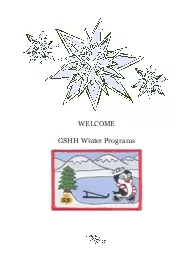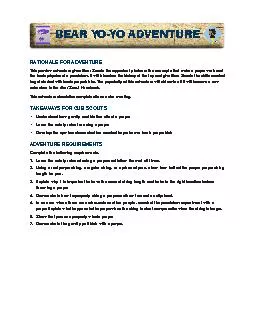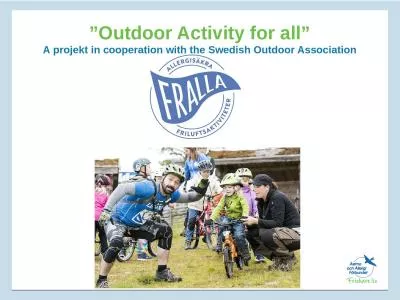PPT-WELCOME GSHH Winter Programs This winter Girl Scouts Heart of the Hudson has three all
Author : mitsue-stanley | Published Date : 2019-11-05
WELCOME GSHH Winter Programs This winter Girl Scouts Heart of the Hudson has three all day or overnight outdoor adventures that need special planning on your part
Presentation Embed Code
Download Presentation
Download Presentation The PPT/PDF document "WELCOME GSHH Winter Programs This winter..." is the property of its rightful owner. Permission is granted to download and print the materials on this website for personal, non-commercial use only, and to display it on your personal computer provided you do not modify the materials and that you retain all copyright notices contained in the materials. By downloading content from our website, you accept the terms of this agreement.
WELCOME GSHH Winter Programs This winter Girl Scouts Heart of the Hudson has three all: Transcript
Download Rules Of Document
"WELCOME GSHH Winter Programs This winter Girl Scouts Heart of the Hudson has three all"The content belongs to its owner. You may download and print it for personal use, without modification, and keep all copyright notices. By downloading, you agree to these terms.
Related Documents














